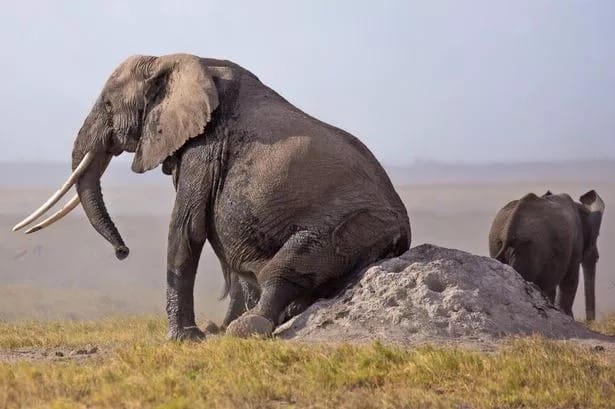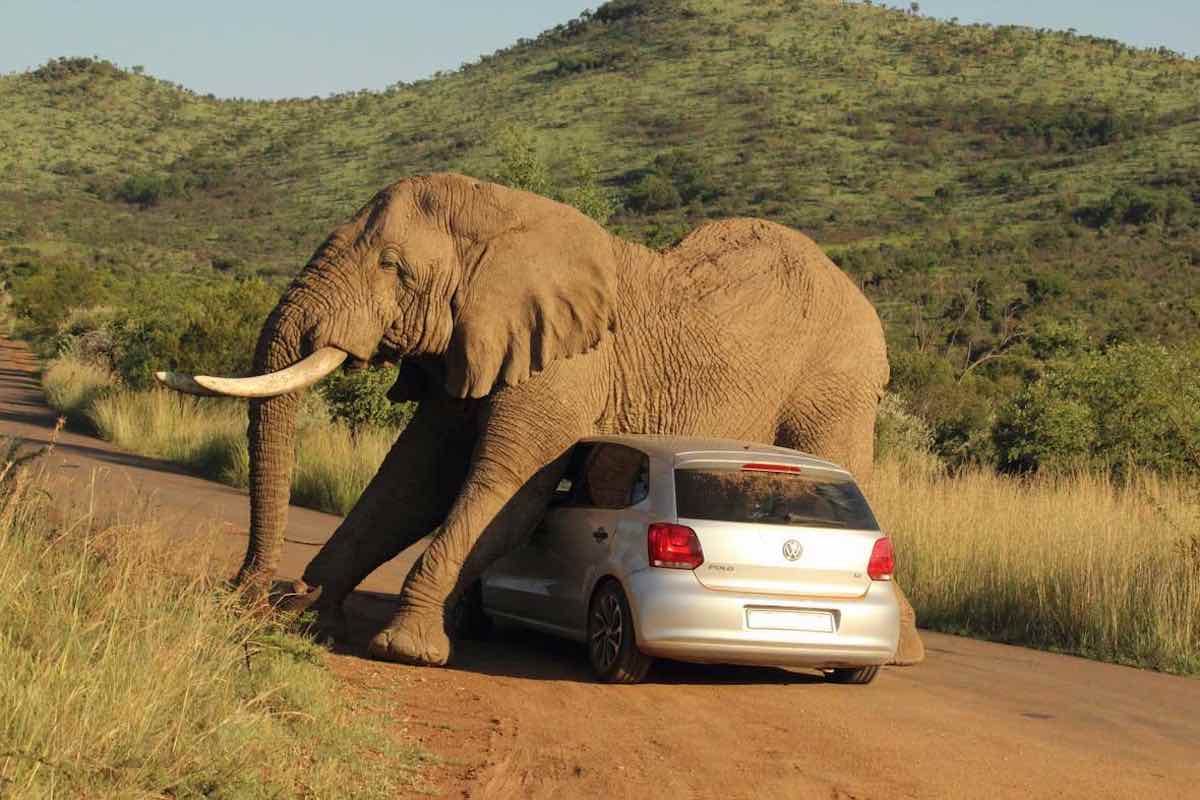Elephants, known for their size and strength, also face the challenge of itching and the need for relief. Understanding how elephants alleviate their itchiness is a fascinating subject worth exploring.
Elephants possess a range of physical tools that aid in relieving their itchiness. Elephants may use various methods such as rubbing against trees, rocks, or other rough surfaces to alleviate itching.
Their trunks, with their remarkable dexterity, could also be instrumental in reaching and scratching those hard-to-reach areas.
Additional insight can be gained by observing the social behavior of elephants. It is possible that elephants engage in mutual grooming, where one elephant may use its trunk or tusks to gently scratch another elephant’s itchy spots.
This bonding and supportive behavior within the herd could serve as another effective way to alleviate itching while strengthening social connections among elephants.
Key Takeaways:
- Regular grooming and cleaning are essential for elephants to relieve itches. Due to the limitations of their trunk, tusks, and legs, elephants often need creative solutions to reach unreachable itches.
- Elephants utilize natural elements like stumps, rocks, trees, and termite mounds to scratch their itches. These objects serve as important tools in relieving their discomfort and maintaining their well-being.
Unreachable Itches: The Limitations of their Trunk, Tusks, and Legs

The unique anatomy of elephants presents challenges when it comes to addressing unreachable itches. The trunk, although highly flexible and versatile, may not always reach certain spots on the elephant’s body.
Similarly, the tusks and legs have limitations in reaching certain areas due to their structure and positioning.
Elephants primarily use their trunks to scratch itches, as it serves as a multi-purpose tool. However, due to the trunk’s length and the limited range of motion, some itchy areas on the elephant’s body may remain inaccessible.
Additionally, the tusks and legs, while sturdy and powerful, cannot extend to reach every spot that requires relief.
Furthermore, elephants’ skin is quite thick, making it less sensitive to minor irritations. As a result, they may not feel the immediate need to scratch every itch they encounter.
From a historical perspective, ancient texts depict elephants seeking relief by rubbing against trees or using various natural elements found in their habitats.
These observations demonstrate the elephants’ resourcefulness in finding alternative ways to alleviate itchiness when their appendages fall short.
How Elephants Scratch Their Itches
Elephants possess remarkable ways of alleviating their itchiness through ingenious methods.
When confronted with an irritating itch, elephants often employ their trunks to address the problem. Their flexible and agile trunks allow them to reach various parts of their bodies, which encountered an itch.
By utilizing their trunks, elephants can target specific areas in need of relief. This creative solution showcases the incredible adaptability of these animals.
In addition to using their trunks, elephants may also utilize different elements in their environment as scratching tools.
They may rub against trees, logs, or even the ground to alleviate a persistent itch. This behavior not only relieves their immediate discomfort, but it also helps them establish territory, communicate with other elephants, and remove dead skin.
Furthermore, elephants have been observed engaging in social scratching, where they gather in groups and take turns scratching each other. This communal behavior not only strengthens their social bonds but also contributes to overall well-being.
Overall, elephants exhibit remarkable ingenuity and resourcefulness in their quest to scratch their itches effectively. By understanding their creative solutions, we can better appreciate their unique adaptations and continue to protect and support their well-being in their natural habitats.
Observing Elephant Scratching in the Wild
By observing elephants in their natural habitat, we can witness these extraordinary moments of relief. These instances provide valuable insights into how elephants alleviate their itchiness.
In the wild, elephants adopt unique methods to satisfy their scratching needs. They skillfully utilize various elements in their environment, such as tree trunks, branches, and rocks, to fulfill this basic instinct.
Their massive bodies make it challenging to reach all areas of their skin, making the scratching process an intriguing spectacle.
One astonishing detail concerning elephant scratching is their ingenuity in using available tools. They use their trunks to reach distant parts of their bodies, while also relying on surrounding objects to provide the necessary relief. This resourcefulness showcases their adaptability and intelligence.
Delving into the history of observing elephant scratching, we can find numerous accounts of researchers and wildlife enthusiasts capturing these captivating moments.
Five Key Facts About How Does an Elephant Scratch an Itch?
✅ Elephants use various objects to relieve their itches, including stumps, rocks, trees, and termite mounds.
✅ Regular grooming and cleaning is essential for elephants to remove insects and parasites that cause itching.
✅ Elephants rub themselves on objects from different angles to alleviate itching, similar to humans rubbing their back on a door frame.
✅ Rocks, trees, and termite mounds can become well-polished from regular use by elephants for scratching.
✅ Itching can be relieved by activities such as taking a mudbath, sandbath, or swimming to remove insects and parasites.
Conclusion
Elephants scratching their itch provides an intriguing glimpse into the resourcefulness of elephants seeking relief.
Elephants, akin to humans, experience itching due to insects and parasites, which they effectively mitigate through regular grooming and cleaning.
They utilize environmental objects such as stumps, rocks, trees, and termite mounds as tools to scratch themselves, often polishing these objects with regular use.
Their method of alleviating itch mirrors human behavior of rubbing against a surface, employing various angles for thorough relief.
Furthermore, activities such as mudbaths, sandbaths, or swimming serve dual purposes of both recreation and itch relief, demonstrating the elephants’ adeptness at using their environment to maintain their health and comfort.
FAQs about How Does An Elephant Scratch An Itch?
Elephants use various objects like stumps, rocks, trees, and termite mounds to scratch their itches. They rub against these surfaces, moving from side to side, and sometimes even scratch their belly and underbelly to alleviate the itch.
Elephants like to be scratched in areas where they cannot reach with their trunk, tusks, or legs. This includes their belly and underbelly, which they often scratch against rocks or other objects to find relief.
When elephants want to scratch their stomach, they typically move from side to side and rub against objects such as rocks, trees, or termite mounds. This rubbing motion helps them alleviate an itch and reach areas that are difficult to scratch with their trunk or legs.
Elephants scratch to relieve itches caused by insects and parasites like ticks and flies. Regular grooming and cleaning are essential for elephants to remove these irritants from their skin. Scratching helps them find relief and maintain proper hygiene.
Elephants commonly use stumps, rocks, trees, and termite mounds for scratching. These objects can often be found in the bush and are well-polished from the regular use of elephants seeking itch relief.
